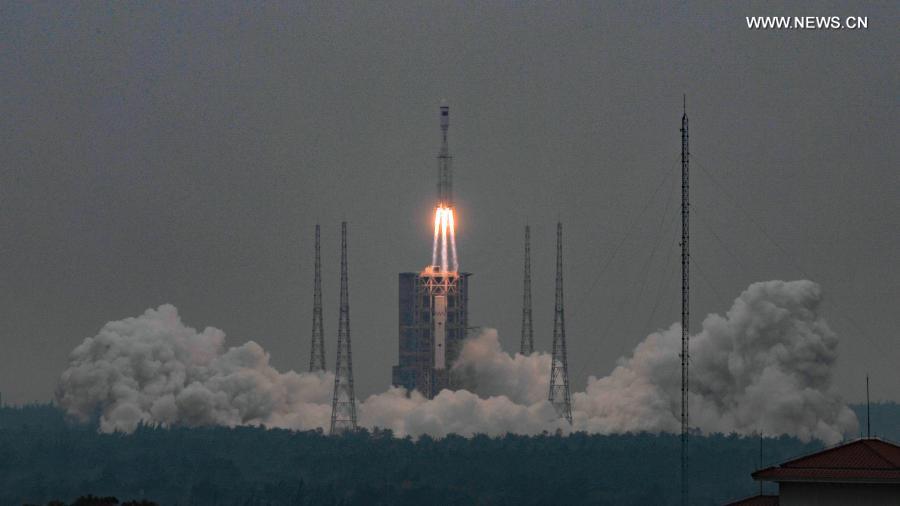China's new carrier rocket Long March-8 makes maiden flight
China's new medium-lift carrier rocket Long March-8 made its maiden flight on Tuesday, sending five satellites into planned orbit, according to the China National Space Administration (CNSA).
China's new medium-lift carrier rocket Long March-8 made its maiden flight on Tuesday, sending five satellites into planned orbit, according to the China National Space Administration (CNSA).
China's new medium-lift carrier rocket Long March-8 blasts off at the Wenchang Spacecraft Launch Site in south China's Hainan Province Dec. 22, 2020. The Long March-8 made its maiden flight on Tuesday, sending five satellites into planned orbit, according to the China National Space Administration. [Photo/Xinhua]
China's new medium-lift carrier rocket Long March-8 made its maiden flight on Tuesday, sending five satellites into planned orbit, according to the China National Space Administration (CNSA).
The rocket blasted off from the Wenchang Spacecraft Launch Site on the coast of southern China's island province of Hainan at 12:37 p.m. (Beijing Time).
The Long March-8 rocket has a total length of 50.3 meters, with a takeoff mass of 356 tonnes. It can carry a payload of at least 4.5 tonnes to a sun-synchronous orbit at an altitude of 700 km.
The rocket fills the gap in China's launch capability to the sun-synchronous orbit from 3 tonnes to 4.5 tonnes, and is of great significance for accelerating the upgrading of launch vehicles, according to the CNSA.
The rocket was developed by the China Academy of Launch Vehicle Technology (CALT), a subsidiary of the China Aerospace Science and Technology Corporation.
It has a 3.35-meter-diameter first stage, a 3-meter-diameter second stage, a 4.2-meter-diameter fairing, and two 2.25-meter-diameter strap-on boosters.
It adopts technologies used in the Long March-5 and Long March-7 rockets, and uses non-toxic and non-polluting propellants.
The rocket will enrich China's launch vehicle variety and help expand the country's aerospace activities, according to the CALT.
It will promote the upgrading of China's medium-sized launch vehicles and satisfy the needs of high-density launch missions for medium and low-orbit satellites, said Xiao Yun, chief commander of the rocket.
Song Zhengyu, chief designer of the Long March-8 rocket from the CALT, said the design of the rocket was based on technologies developed for previous Long March rockets.
"It will lay a technological foundation for the development of large and heavy rockets, shortening development periods and reducing costs," Song said.
The rocket can send one or multiple satellites in a single launch, and can undertake launch networking missions for low-Earth orbit satellites, according to Wu Yitian, deputy chief designer of the rocket.
Long March-8 is the first among China's carrier rockets to adopt thrust control technology, which will enhance its adaptability to different missions and help test related technologies for rocket reuse.
"Long March-8 will offer a platform for the application of and experiments for recycling, intelligent and automatic technologies," Wu said.
The five experimental satellites launched by the rocket will carry out the in-orbit verification of microwave imaging and other technologies. They will conduct experiments in space science, remote sensing and communication technologies.
Tuesday's launch was the 356th mission of the Long March rocket series.


